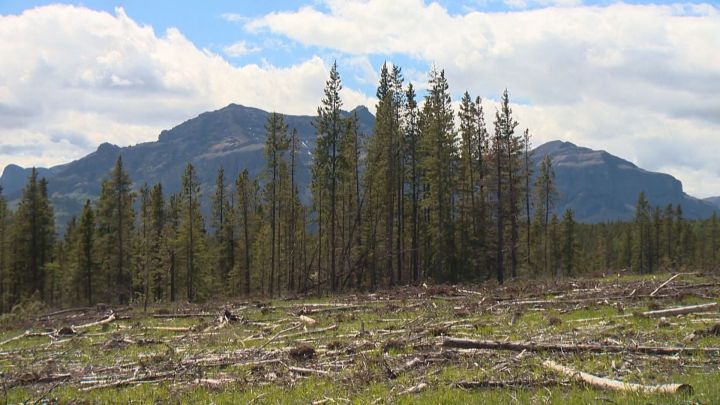Editor’s note: This story originally stated that Alberta’s natural ecosystems are shrinking faster than the Amazon rain forest. In fact, that rate of disturbance is only being exceeded in certain parts of the province, such as the foothills along the Rockies in western Alberta.

Alberta’s ecosystems and the natural beauty they create are still largely intact but parts are disappearing at rates that exceed deforestation in the Amazon rain forest.
“We continue to lose ecosystems,” said researcher Jahan Kariyeva. “That we can definitely see.”
Kariyeva, a University of Alberta geographer, is lead author on the latest report from the Alberta Biodiversity Monitoring Institute, an arm’s-length research body overseen by industry, government and non-governmental organizations.
READ MORE: Study finds animals are restricting migratory movement because of humans
Its most complete study on the human footprint across Alberta has found that 70 per cent of the province is still untouched. Most of that is in the north.
At the turn of the century, just over one-quarter of Alberta was disturbed by agriculture, communities, forestry, energy and other developments. Now, the total is almost 30 per cent.
That’s an area equal to 3 1/2 times the size of Banff National Park. Most of that disturbance comes from logging.
Changes are coming most quickly in the foothills, a vast area along the eastern slopes of the Rocky Mountains subject to pressures from forestry, energy, residential development and recreation.
READ MORE: U of A study finds predator compensation program for ranchers helps conservation efforts
The study says disturbance in the foothills has gone from less than one-fifth in 1999 to 29 per cent in 2015, most from forestry. That’s about a 60 per cent increase in disturbance — almost twice the rate in the Amazon over the same time span.
In Alberta’s oilsands, developed land has increased by 75 per cent. The report points out that’s still only 8.4 per cent of the entire forest ecosystem in the area.
Kariyeva said the study should help politicians and land-use planners make better decisions.
“We need to understand the human footprint dynamic and the trends, so we can reduce the effect of human activity.”
The first casualty of spreading development is often biodiversity, said Kariyeva.
“More human footprint, less biodiversity.”
Her results correspond with previous research.
A 2014 study concluded that Alberta had the most forest disturbance of any large province in Canada. Global Forest Watch also found the highest rates of new disturbance in the foothills and the oilsands region.
READ MORE: Mountain pine beetles from Jasper National Park moving east into commercial forest
The rate of new development in the foothills is concerning, said Simon Dyer of the clean-energy think tank Pembina Institute, who also sits on the board of the biodiversity monitoring agency.
“What you’re seeing is a very significant rate of change in the foothills,” said Dyer, who pointed out that less than two per cent of that region is in a conservation area.
An Alberta government spokesperson was not available to comment.
Dyer said having so much untouched land left in the province means conservation still has a chance.
Logging the Ghost Part II: Trees tell weather, climate change stories
“We have a lot of relatively untouched ecosystems here,” said Dyer. “And we have substantive land-use change taking place.”



Comments